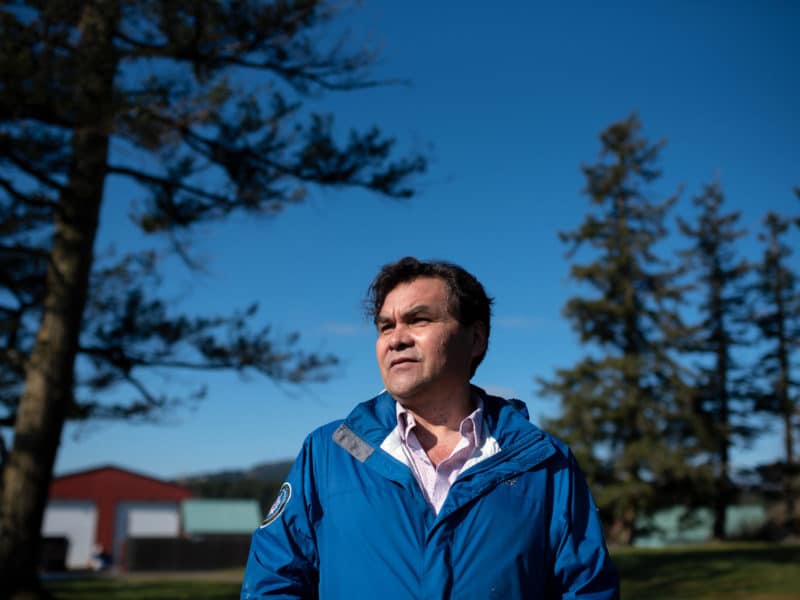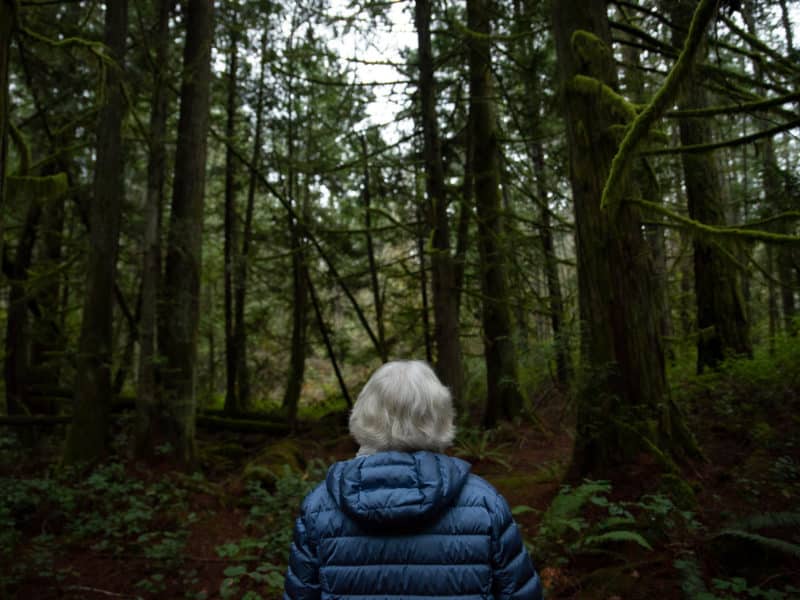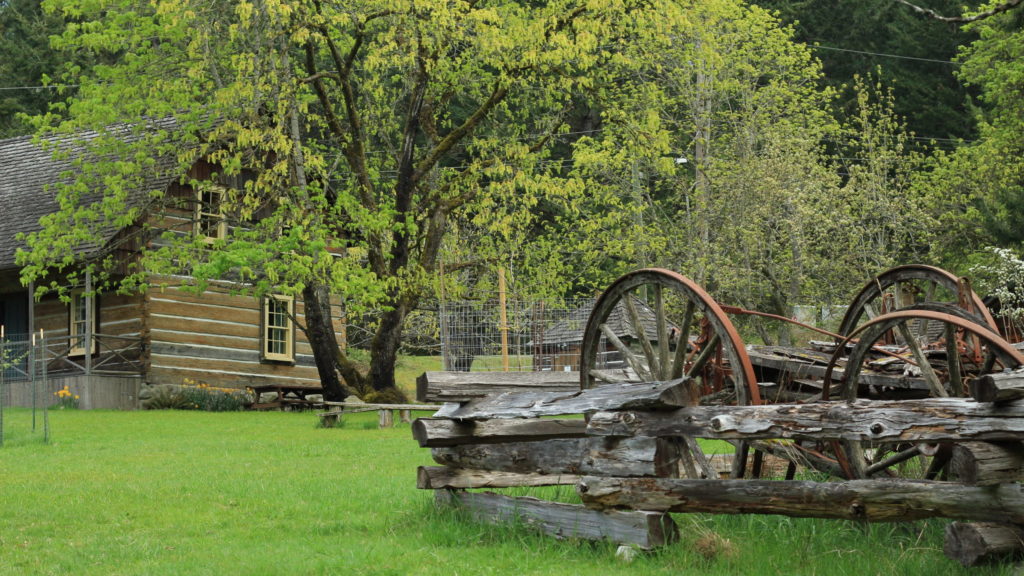
This article is the first in an ongoing series. Sign up to be the first to read the next edition.
If you drive north up Millstream Road from the heart of Langford B.C., past the highway, past the big box stores, past the tight residential subdivisions, past the Bear Mountain Resort Community and the Western Speedway (now the Westshore Speedway), you’ll soon cross an invisible line into a community that feels worlds apart from all that hustle and bustle.
You’ll know when you get there. Winding roads flanked by tall trees and houses set far back in the forest on large properties make up the District of Highlands — or as Highlands Mayor Ken Williams calls it, “the lungs of the West Shore.”
You’ll quickly notice signs with the words “NOT OK.” A teal blue sandwich board stands near some mailboxes, sometimes advertising community information sessions about an impending rock quarry operation under development by O.K. Industries near the municipal border. The company is now clearing trees from the land to make way for a 39-acre quarry on its 65-acre parcel.
Depending on when you arrive, you might see people holding signs and protesting by the roadside. The signs read, “Save Highlands drinking water” and “Parks not mines.” They’ve been out there nearly every day for the past few months, raising awareness about what they say is a threat to the Highlands’ water supply and natural environment.
That borderline has been a site of resistance against urban incursion for decades, and this is just the latest fight. The District of Highlands incorporated in 1993, but its residents have fought for it as a natural refuge as far back as the 1950s.
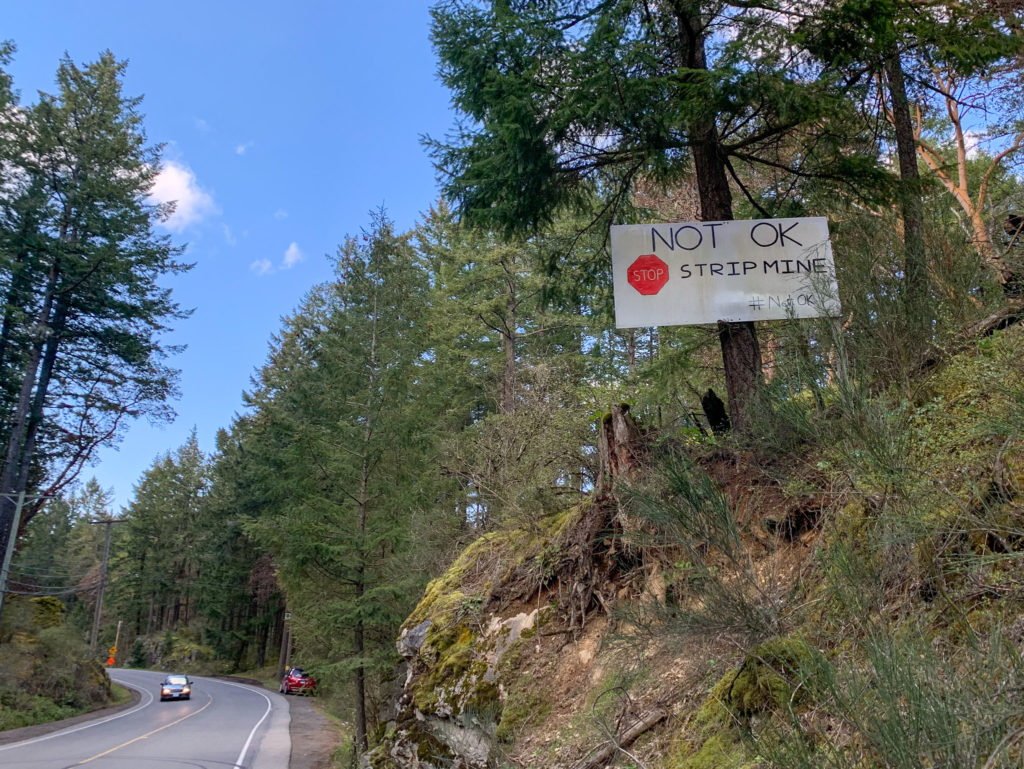
The pressure to make room for Greater Victoria’s growing population is enormous. In 2020 four West Shore municipalities made the top-10 list of fastest growing B.C. communities, with Langford taking the top spot. Meanwhile, the estimated population of the District of Highlands went down between 2019 and 2020, from 2,473 to 2,451 residents.
But Highlanders are unified in their vision for their community, and that vision is as a place of refuge, away from the urban noise. The struggle for conservation has always been part of the District of Highlands’ history, baked deep into the roots of the community. And that story begins with Bob McMinn, Highlands’ first mayor.
“It was both my hobby and my crusade to save the Highlands,” says McMinn, now nearly 97, and sharp as a tack.
Fighting for a forest city
McMinn dedicated his life to the Highlands, but he first came for love. The woman he would eventually marry visited a friend who lived in what would become the Highlands and decided that’s where she wanted to live. McMinn married her, found a job in Victoria and in 1952 bought a house for them in the Highlands.
“I haven’t regretted it for a moment,” he says. “I liked the idea of living out in the woods.”
Inspired by European cities like Oslo and Frankfurt, which have large forested areas near the urban centre, McMinn thought the Highlands could be the same for the Victoria region. He says pressure to develop increased by the 1960s and he and his wife recognized the need for a unified community voice and vision. He created the Highlands Rate Payers Association — now the Highlands District Community Association — and they put together a plan for what the Highlands should look like.

McMinn says it was an exciting time. He realized that if he wanted to protect the forested area of the Highlands, he had to make sure of it himself. He led a study committee to help form a Highlands plan — a vision to incorporate as a rural municipality “where conservation of the forest was as important as finding places for people to live.”
By the late 1980s, Highlands was “joined at the hip” with neighbouring Langford, McMinn says.
Highlands held a referendum and, despite pressure from Langford and the province to join the two areas, residents voted in favour of incorporation and against amalgamation. Highlands incorporated as a district in 1993.
Related: Growing pains: The West Shore’s identity crisis
“We were fortunate that we were given an opportunity for an incorporation vote,” McMinn says. “They really wanted to see us as part of a big municipality rather than be a small municipality.”
Eventually, the first council of the District of Highlands formed, with McMinn as the inaugural mayor. Since then, McMinn has had a significant hand in conservation of green spaces and Highlands history. As neighbouring areas like Langford developed quickly, McMinn set out to build his forest community.
A legacy of conservation
McMinn organized the Highlands Heritage Park Society, which restored the Caleb Pike House property and reconstructed the 1893 Highlands Schoolhouse, providing Highlanders with a community gathering place. He donated pieces of his own property to the Land Conservancy of B.C. and worked to create Gowlland Tod Provincial Park. He also started the Highlands Parks and Recreation Association and was the founding chair of the Greater Victoria Greenbelt Society (GVGS).
In 2009, GVGS worked to acquire Mary Lake as a nature sanctuary. McMinn took to Twitter to bring attention to the cause. His bio still reads, “86 years old, wants to Save Mary Lake, needs your help.” The society purchased the property in 2016.
By one count, McMinn has contributed more than half a million dollars in land, cash and materials as well as thousands of volunteer hours to conserve greenspace and the Highlands community. He won the 2020 B.C. Medal of Good Citizenship for all of his work.
“He’s the father of the Highlands,” says Ken Williams, Highlands’ current mayor.
Williams says McMinn still attends every council meeting to this day. He sits on various committees and boards and is deeply involved in the community.
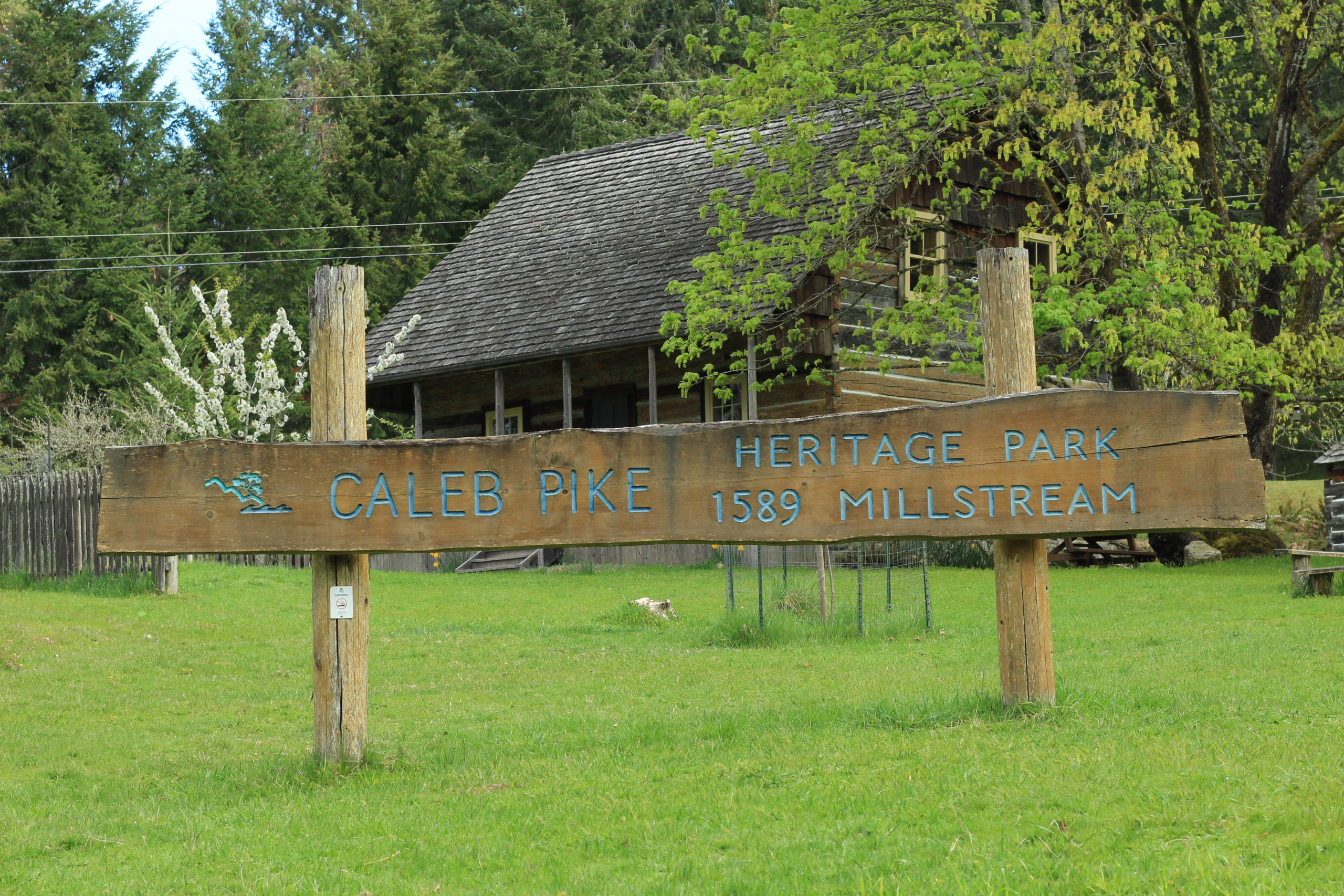
[optin-monster slug=”qfiniv269g1sksklj6ch”]
A community vision
McMinn’s legacy is sure to live on, because protecting the Highlands is a community effort and not a one-man show.
The district’s Official Community Plan (OCP), developed in 2007 and amended in 2013, makes it clear that there’s one thing that unites Highlanders — treasuring the natural landscape. It outlines that gradual but steady change with new residential subdivisions has been offset by establishing large areas of parkland.
“Public engagement in 2003 through 2004 revealed strong values about protection of natural areas that remain largely consistent nearly 10 years later,” the plan says.
In 2010, Highlands council developed an Integrated Community Sustainability Plan. It is the community’s highest level policy document, which is meant to guide all existing plans and policies and give direction to all future initiatives, the OCP says. Land use decisions are guided by the OCP and the sustainability plan. All land use decisions also must consider water, as stated in the OCP. The community relies on an aquifer for its potable water.
With its community vision crystal clear, in 2016 the District of Highlands rejected O.K. Industries’ application to rezone the property near its southern border and put a rock quarry there. But the company went over the district’s head, applying instead for a mining permit with the province.
In 2017, the district sent letters to the province and Premier John Horgan, voicing its concerns about the environmental impacts of the quarry and potential impacts on the district’s aquifer. B.C. granted the quarry permit to O.K. Industries Ltd. in 2020. And, in November 2020, the B.C. Supreme Court rejected an application from the Highlands District Community Association to review that decision.

The fight continues
Now, three separate groups of Highland community members are fighting the quarry, on three different fronts, even as the company begins clearing the trees from the land.
The District of Highlands is appealing a January, 2021 B.C. Supreme Court decision stating that the district’s Official Community Plan and bylaws are not applicable to activities authorized by the quarry permit.
In December, 2020, the Highlands District Community Association launched a separate appeal after the B.C. Supreme Court rejected the association’s request to review the granting of the quarry permit.
Community members who organize under the group “Not OK” are raising awareness about the issue through roadside peaceful protests, information sessions and petitions. A spokesperson from the group, Karen Burns, says they hope to connect with communities facing similar issues and push for reforms to the Mines Act so local concerns and values are taken into account.
As the fight for the Highlands continues, McMinn has one piece of advice:
“Rejoice in what you’ve got and don’t let them take it away from you.” [end]
Next week, The Discourse will go deeper on the Highlands’ fight against the O.K. Industries quarry. Sign up to be the first to read the next edition. And tell your friends.
This Delving Into Development article is made possible in part with funding from the Real Estate Foundation of BC and Journalists for Human Rights. Their support does not imply endorsement of or influence over the content produced.

